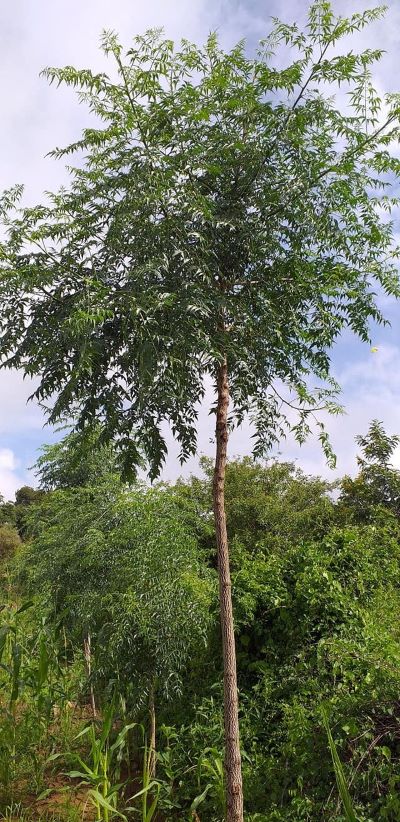Fact sheet about Melia volkensii
Distribution and habitat
M. volkensii appears between 350-1680 altitude and where rainfall is 300-800mm. It is common in association with acacia-commiphora vegetation, in bushlands, sometimes along watercourses and on rock outcrops.
Flowering and fruiting habits
It is a deciduous tree up to 20 m tall and 25 cm wide, open crowned and laxly branched. Bark is grey, fairly smooth and furrowing as it ages. Leaves are light green, bipinnate, 3-7 per pinna, up to 35 cm long, hairy when young. Leaflets are oval to lanceolate, tapering to apex with entire or serrated margins, up to 7.5 cm long. Flowers are small, white fragrant and in loose sprays, andromonoecious, with 4-5 petals and stamens are united into a tube. Inflorescence congested up to 12 cm long, axillary. Fruit is oval green to grey, usually 4 cm long with a thick, bony endocarp.
Uses other than pesticidal
Fodder- Popular with farmers for their goats and cattle. Tree is pruned to produce fodder at dry season end.
Apiculture- Used to make log hives as wood is easily shaped. Flowers are good for bee forage.
Timber- As wood is easily shaped, is termite resistant, durable and decay resistant, it is used to make acoustic drums, containers, mortars, doors and window frames, shutters, poles and furniture.
Fuel- Branches cut for fodder are left to dry then used for firewood.
Soil improver- Some farmers have suggested that heavy leaf fall may increase crop yields at later stage of development.
Propagation and cultivation
M. volkensii is naturally dispersed by giraffe, kudus and goats which eat the fruits. Seed germination is difficult. Some have reported germination of seeds after removal of fleshy seed coat and hard shell and soaking of softer inside seed in water and anti-fungal treatment. The seeds are then germinated in sterile, sandy soil. Germination can also be done using root suckers.
Seed collection & Storage
Seeds are extracted from the large fruit by hand.
Seed storage is orthodox and viability can be maintained in hermetic storage at 11-15% mc at room temperature for several years.
Parts used
Leaves
Preparation
Dry and grind
Uses
Can be used both pre and post-harvest
Target organisms
Against broad range of insects

